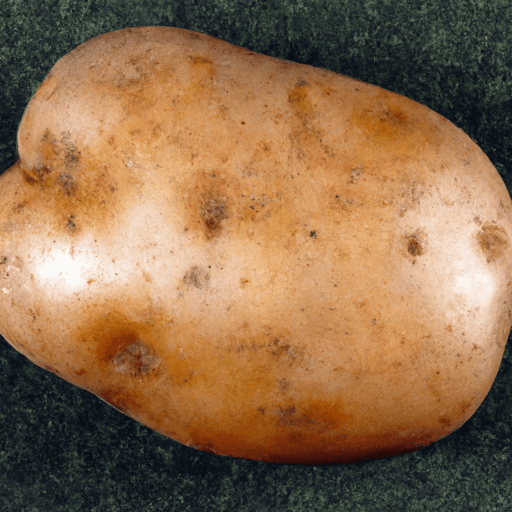Russet Potatoes: A Versatile and Delicious Tubular Delight!
If there’s one staple ingredient that has stood the test of time in kitchens across the globe, it’s the russet potato. With its rough, thick skin and starchy flesh, the russet potato offers both versatility and an appealing taste that has endeared it to cooks and food enthusiasts alike. In this blog post, we’ll explore the wondrous world of russet potatoes, from their mouthwatering taste to their myriad of culinary uses, while also uncovering their nutritional value and fascinating history.
Taste and Texture
When it comes to taste, russet potatoes deliver a delightful experience. The creamy, fluffy texture of their flesh, coupled with a subtly earthy and buttery flavor, makes them perfect for a wide range of dishes. Whether you’re baking, frying, mashing, or roasting, russet potatoes maintain their characteristic flavor, adding a comforting touch to every bite.
Culinary Uses
Russet potatoes have found a place in countless classic recipes, owing to their versatility and ability to adapt to various cooking methods. Here are some popular culinary uses for russet potatoes:
Mashed Potatoes: The high starch content of russets makes them perfect for creating creamy, velvety mashed potatoes that are wonderfully fluffy. Simply boil and mash them, then add butter, milk, and your preferred seasonings for a side dish that complements any main course.
French Fries: Crispy, golden-brown french fries owe their existence to the russet potato. Its dense texture and high starch content give fries their satisfying crunch on the outside, while maintaining a fluffy interior—a match made in potato heaven!
Baked Potatoes: With their thick skins and fluffy interiors, russet potatoes are ideal for baking. Top them with butter, sour cream, cheese, or any of your favorite toppings for a simple yet satisfying meal. Don’t forget the bacon bits!
Potato Soup: Russets shine beautifully in comforting potato soup. Their high starch content helps to create a thick, creamy broth that warms both body and soul. Add some leeks, onions, bacon, or cheese for an extra level of flavor.
Roasted Potatoes: Russet potatoes can be roasted to perfection, creating a crispy exterior and a soft, fluffy inside. Toss them in olive oil, sprinkle with herbs and spices, and roast until golden brown. They make an excellent side dish for any meal.
Nutritional Value
Beyond their delicious taste and culinary potential, russet potatoes also offer a fair share of nutritional benefits. They are a great source of carbohydrates, providing energy to fuel your daily activities. Russet potatoes also contain significant amounts of vitamin C and vitamin B6, which support the immune system and contribute to overall health. Additionally, they provide essential minerals like potassium and magnesium, important for maintaining bodily functions.
Interesting Facts and History
Did you know that russet potatoes are named after their skin color, which resembles the coat of a russet-brown-colored animal? These potatoes were first cultivated in the early 19th century in the United States, specifically in New England. Since then, their popularity has soared, becoming a favorite among chefs and home cooks alike.
In conclusion, the russet potato is a humble yet extraordinary ingredient that has left an indelible mark on the culinary world. Its versatility, delightful taste, and rich history make it a staple in kitchens worldwide. So, whether you’re in the mood for mashed potatoes or craving some french fries, don’t forget to reach for the russet potato—your taste buds will thank you!
Origin:
- The russet potato, also known as the Idaho potato or baking potato, was first cultivated in the 19th century in the United States.
- It was developed by Luther Burbank, an American botanist and horticulturist, who selected a sport of the early rose potato and named it the russet.
Common Uses:
- Russet potatoes are known for their high starch content, making them perfect for baking, frying, and mashing.
- They are commonly used to make baked potatoes, French fries, potato wedges, and mashed potatoes.
- Due to their fluffy texture, they are also used to make gnocchi and potato pancakes.
Nutritional Benefits:
- Russet potatoes are a good source of vitamin C, potassium, and vitamin B6.
- They also contain fiber and are low in fat, cholesterol, and sodium.
- They are a healthy carbohydrate choice and can provide energy to the body.
Unique Properties and Historical Significance:
- The russet potato has a thick, rough skin that turns golden brown when cooked, providing a crispy texture.
- Due to its dry and fluffy texture, it is ideal for absorbing gravies and sauces.
- The russet potato has gained popularity and has become a staple in American cuisine, especially in the preparation of comfort foods like mashed potatoes and French fries.
- It is the primary potato used in the production of potato chips in the United States.
- The name “russet” comes from the reddish-brown skin color resembling coarse homespun cloth called “russet.”
- Idaho, one of the largest potato-producing states in the U.S., has made the russet potato a significant part of its economy. In fact, the state adopted the russet potato as its official state vegetable in 2002.




Use the share button below if you liked it.
It makes me smile, when I see it.